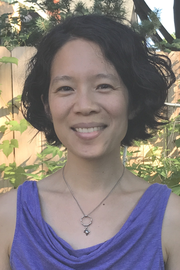
Computational Biophysics; Biomolecular simulations
Research in the Chong lab involves the development and application of molecular simulation approaches to model a variety of biophysical processes. A summary of some of the lab’s research directions is below:
Weighted ensemble approaches for sampling rare events
To enable the efficient simulation of rare events (e.g. protein folding and binding processes), The Chong lab has been developing approaches based on “weighted ensemble” path sampling, which introduces no bias into the dynamics. Using its high-performance implementation of this approach (WESTPA), the lab and others have demonstrated that this approach can enhance the efficiency of generating pathways and rate constants for rare events by orders of magnitude.
Simulation of protein binding pathways and kinetics
Obtaining atomically detailed views of protein binding (and unbinding) processes has been a grand challenge in the field of biomolecular simulation due to the long timescales required. To tackle this difficult problem, The Chong lab has been using weighted ensemble algorithms to generate pathways and rate constants for various protein binding processes, including those that involve intrinsically disordered peptides that fold only upon binding their intended partner proteins.
Design of protein conformational switches
The process of designing protein conformational switches involves a significant amount of educated guesswork in the laboratory. To aid in the rational design of protein switches, the Chong lab has been developing simulation approaches with various levels of coarse-graining to efficiently predict the dynamics of these protein switches. It has been focusing on a particular class of protein-based switches that are engineered using a "mutually exclusive folding" strategy in which two formerly independent protein domains are fused together in such a way that at any moment in time, only one or the other protein can be folded, but not both.
Source: https://www.chem.pitt.edu/person/lillian-chong